mIKs-it: Designing an Inclusive Digital Media Platform for Children
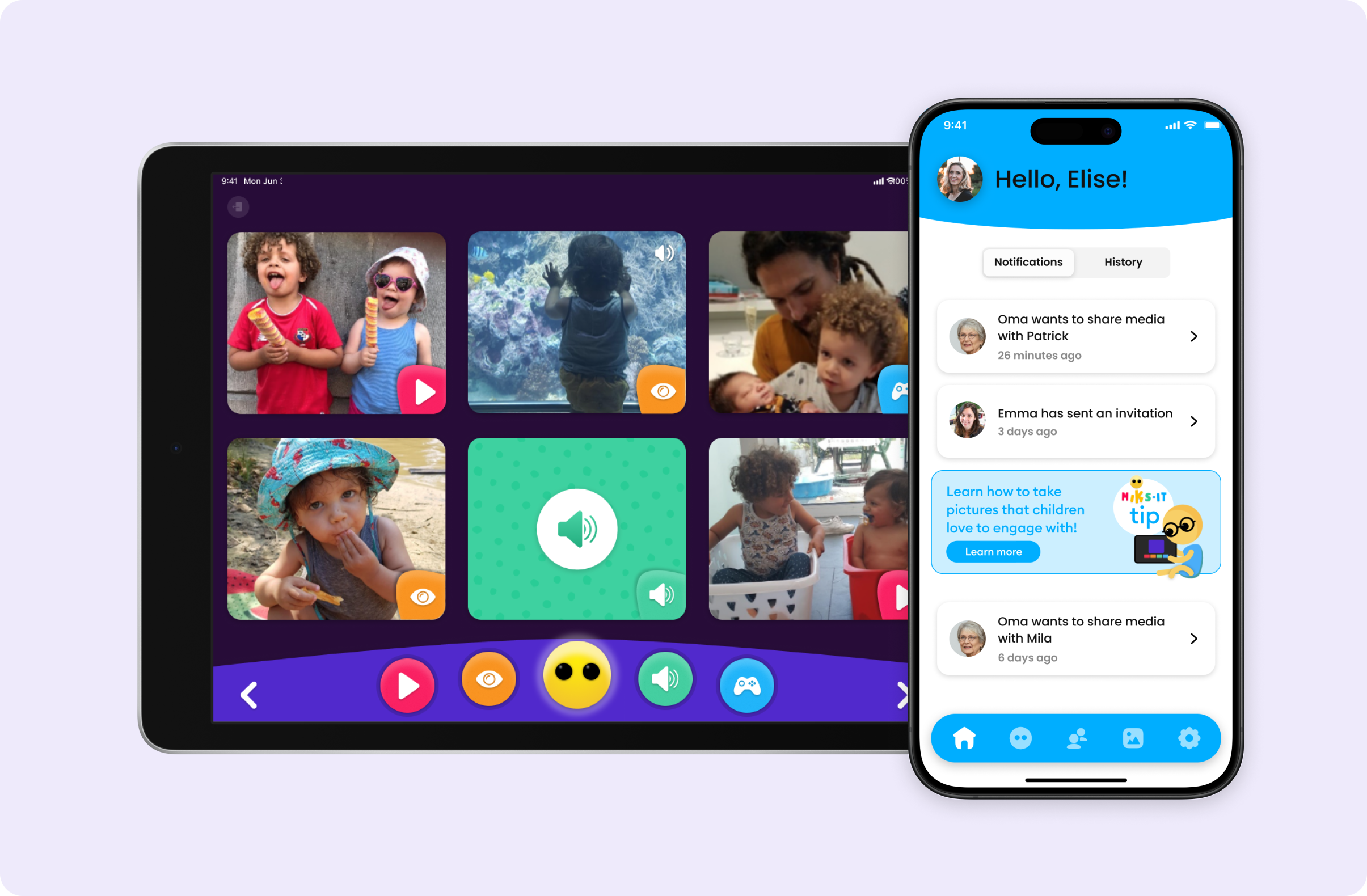
Project Overview
As Senior Product Designer at Meeco, I led the design for mIKs-it – a digital media application providing a secure and safe environment for children that is inclusive for those with developmental or physical disabilities.
I worked as the lead designer on this 6-month project co-developed by Meeco and Heder, a school for special needs children in Belgium. Our delivery team included a product owner, CTO, front-end engineer, and back-end engineer from Meeco, with the discovery phase led by Trendwolves, a Belgian research company.
Understanding the Problem
Heder approached us with a vision for a digital tool that would provide a secure environment for children with special needs to engage with personalised media content. Traditional media applications weren't designed with the unique requirements of these children in mind, presenting several challenges:
- Existing media platforms lacked appropriate accessibility features for children with developmental or physical disabilities
- Parents had privacy concerns about sharing their children's media on commercial platforms
- Children with special needs often struggled with the complex interfaces of standard media applications
- There was a need for a platform that could support educational and therapeutic goals while being enjoyable for children
We had an opportunity to create an application specifically designed for children with varying abilities that would provide a safe, accessible way to engage with personalised media while giving parents complete control over content and privacy.
Discovery Process
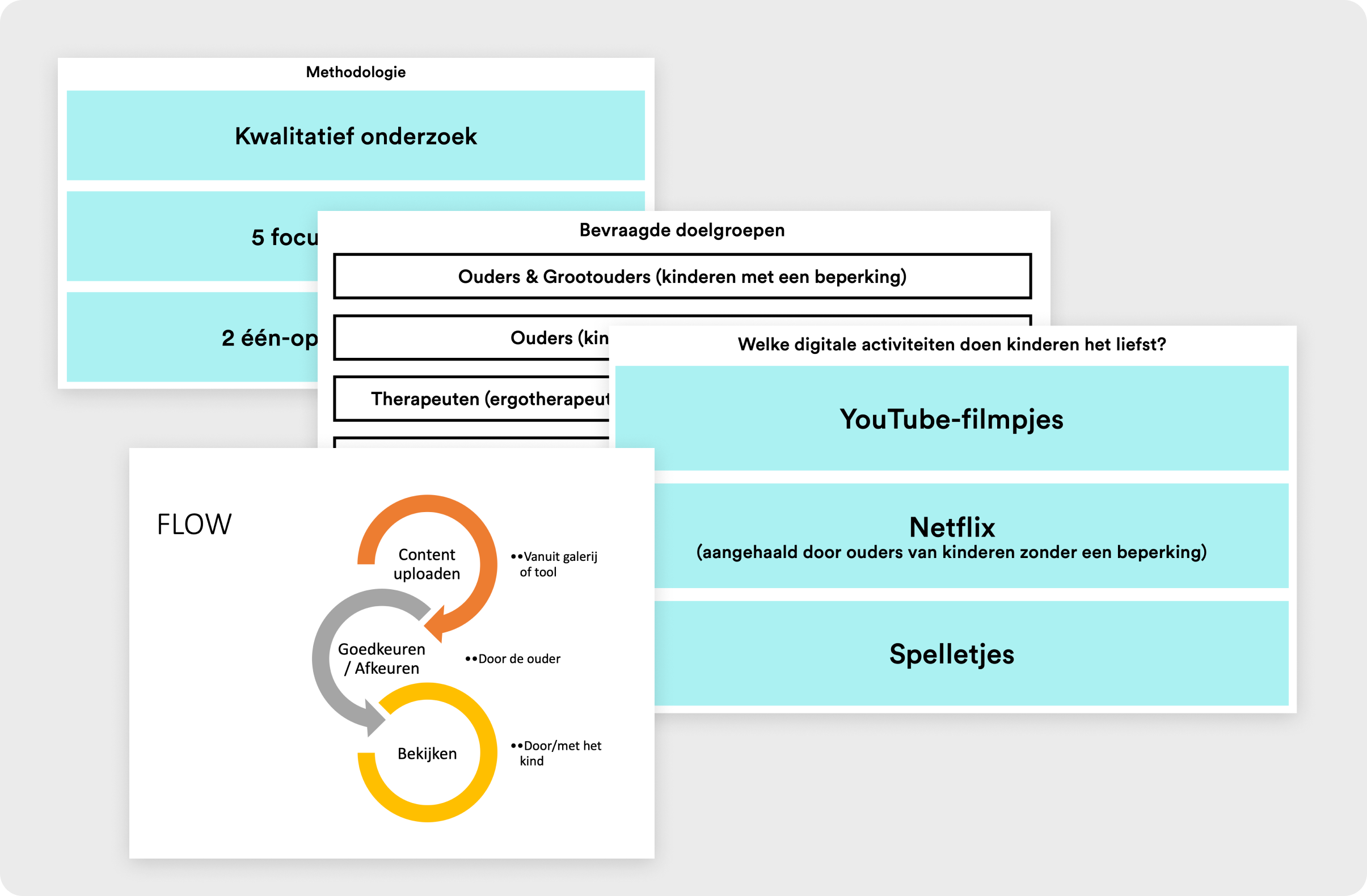
The discovery phase was led by Trendwolves, with whom I collaborated closely. We conducted comprehensive user research with 7 test families having children of various ages and needs. Through in-depth interviews, surveys, and observation sessions, we developed 6 distinct personas representing different user types.
Our research revealed several key insights:
- Children with special needs showed distinct engagement patterns with digital content compared to neurotypical children
- Personalised content featuring family members and familiar environments created the strongest engagement
- Different content types (photos, videos, audio) served different developmental purposes
- Parents needed granular control over content sharing and permissions
- Simple, intuitive interfaces with minimal text were essential for children's independent use
- The application needed to support both entertainment and educational/therapeutic uses
These findings shaped our user stories from both child and parent perspectives. Children needed an engaging, accessible interface they could navigate independently, while parents required robust content management and sharing controls.
Design Process
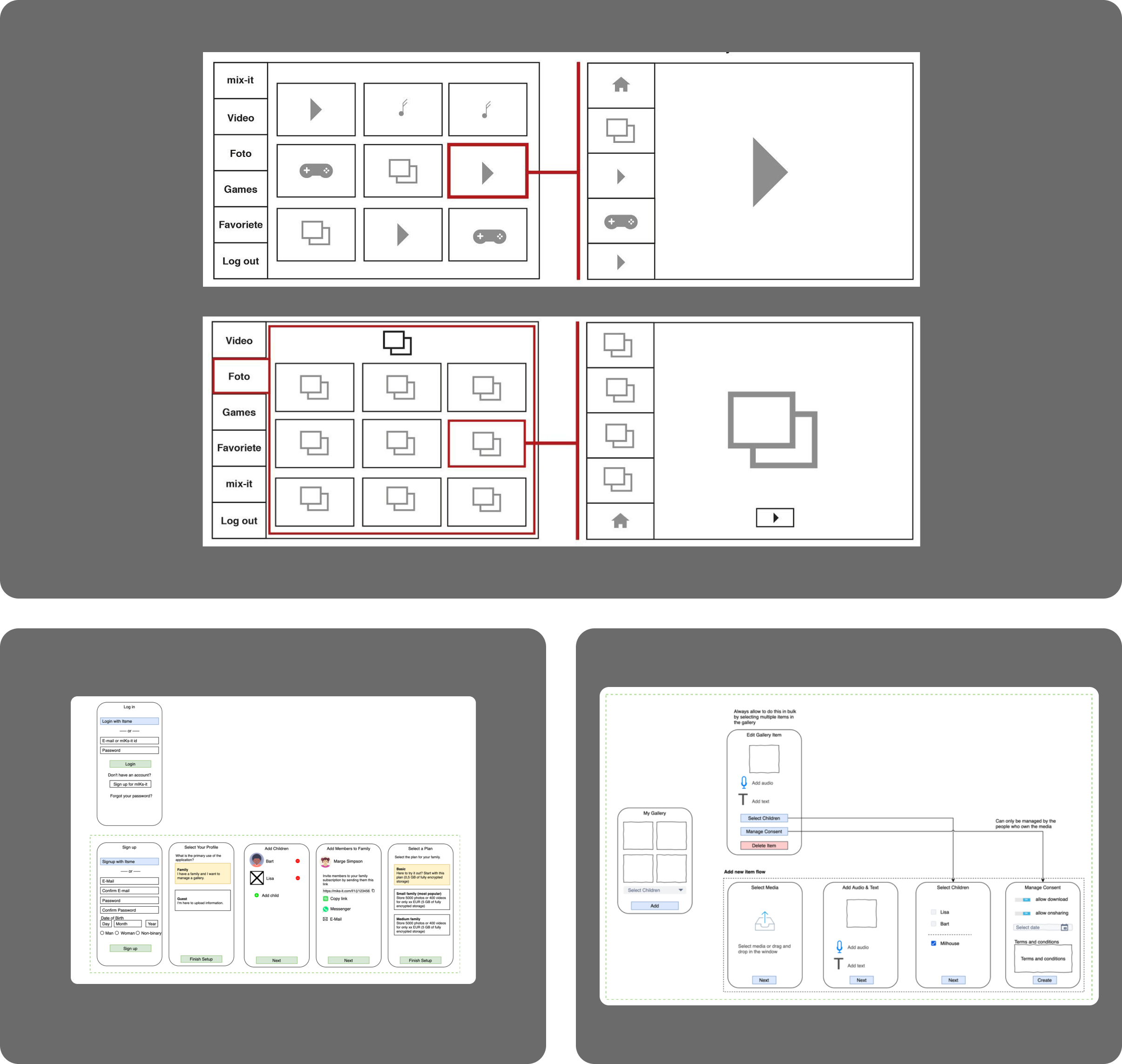
My approach followed a user-centred design process with accessibility as a core principle:
I co-created wireframes with Heder and Trendwolves through collaborative workshop sessions. Together, we developed wireframes for both the children's application (mIKs-it Kids) and the parent administration application (mIKs-it Admin). These wireframes focused on creating distinct experiences tailored to each user group – a highly visual, intuitive interface for children and a comprehensive management tool for parents.
The children's interface demanded particular attention to accessibility. A critical constraint was that the kids app had to work with accessibility devices for children who couldn't use physical touch inputs. I worked closely with our engineering team and Heder's accessibility experts to design UI that would work comfortably for all users.
Together, we established key design principles:
- High contrast visuals with vibrant buttons against dark backgrounds
- Consistent, large interactive elements
- Simple navigation without text prompts
- Predictable response patterns to support different cognitive abilities
- Tab selection from left to right for integration with alternate input devices like switches
For the mIKs-it Admin application, we created wireframes for the core functionality:
- Content management in the gallery
- Child profile management
- Contact management and permissions
- Settings and notifications
These wireframes were refined through collaborative workshops with stakeholders from both Meeco and Heder. I then developed high-fidelity designs for key sections, creating a cohesive visual language across both applications while maintaining their distinct purposes.
During the build phase, we followed an agile development approach with 3-week sprints, allowing us to rapidly iterate based on stakeholder feedback. I worked closely with our engineering team to ensure technical feasibility while maintaining the integrity of the design vision.
The Solution
mIKs-it consists of two interconnected applications – a children's interface (mIKs-it Kids) and a parent administration tool (mIKs-it Admin) – supported by a sophisticated backend architecture.
mIKs-it Kids
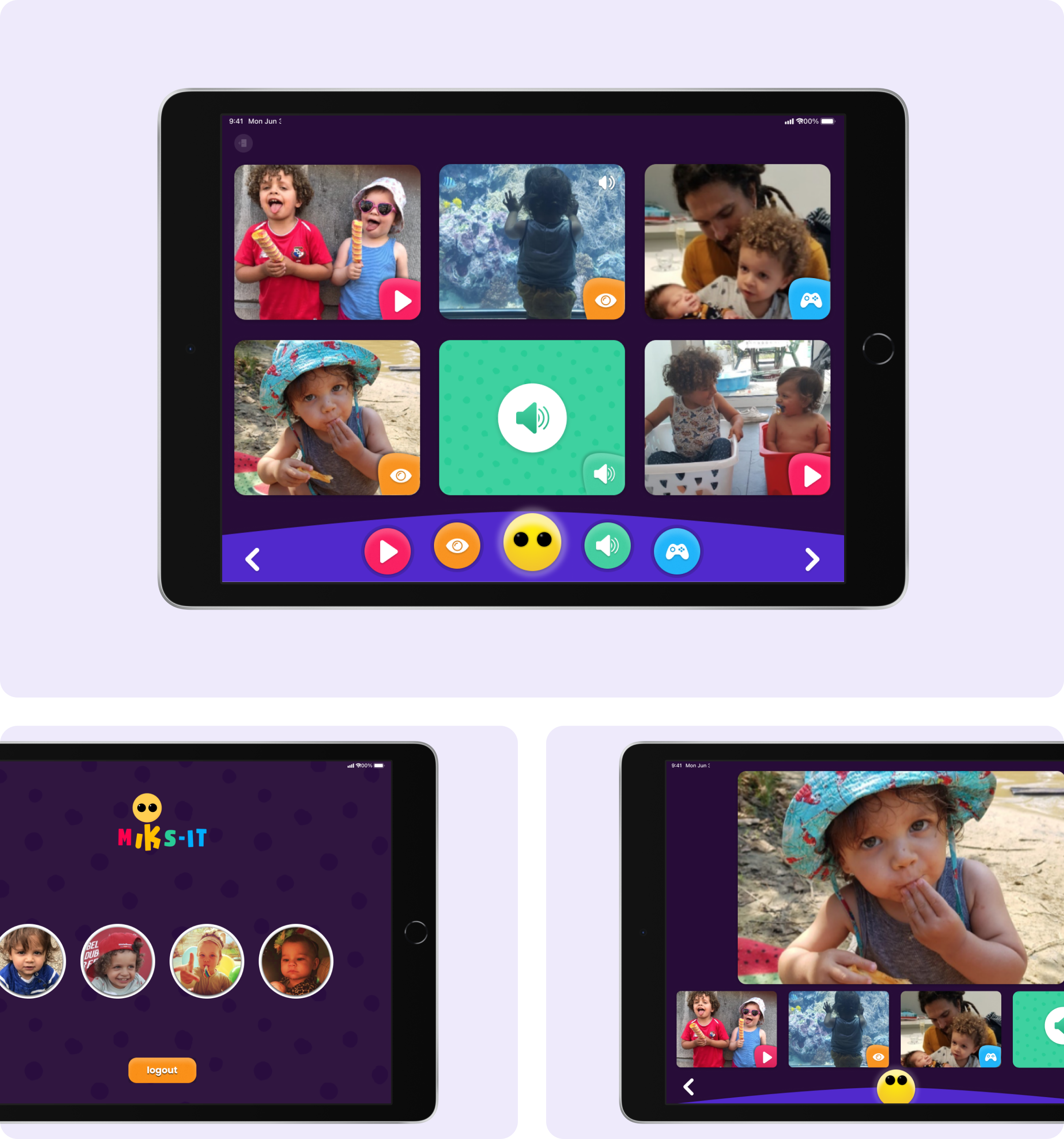
The children's application provides a streamlined, accessible experience with these key features:
- Profile Selection: Allows multiple children to share a device with personalised content for each
- Grid View: The main interface presenting a visual array of available media
- Media Categorisation: Simple filtering for photos, videos, and audio content
- Game Mode: Interactive experiences customised for different ability levels
- Intuitive Navigation: Large touch targets and consistent interaction patterns
The interface uses minimal text, relying instead on clear iconography and visual cues. The dark background with vibrant content creates high contrast for improved accessibility, while the consistent layout helps children develop familiarity and confidence.
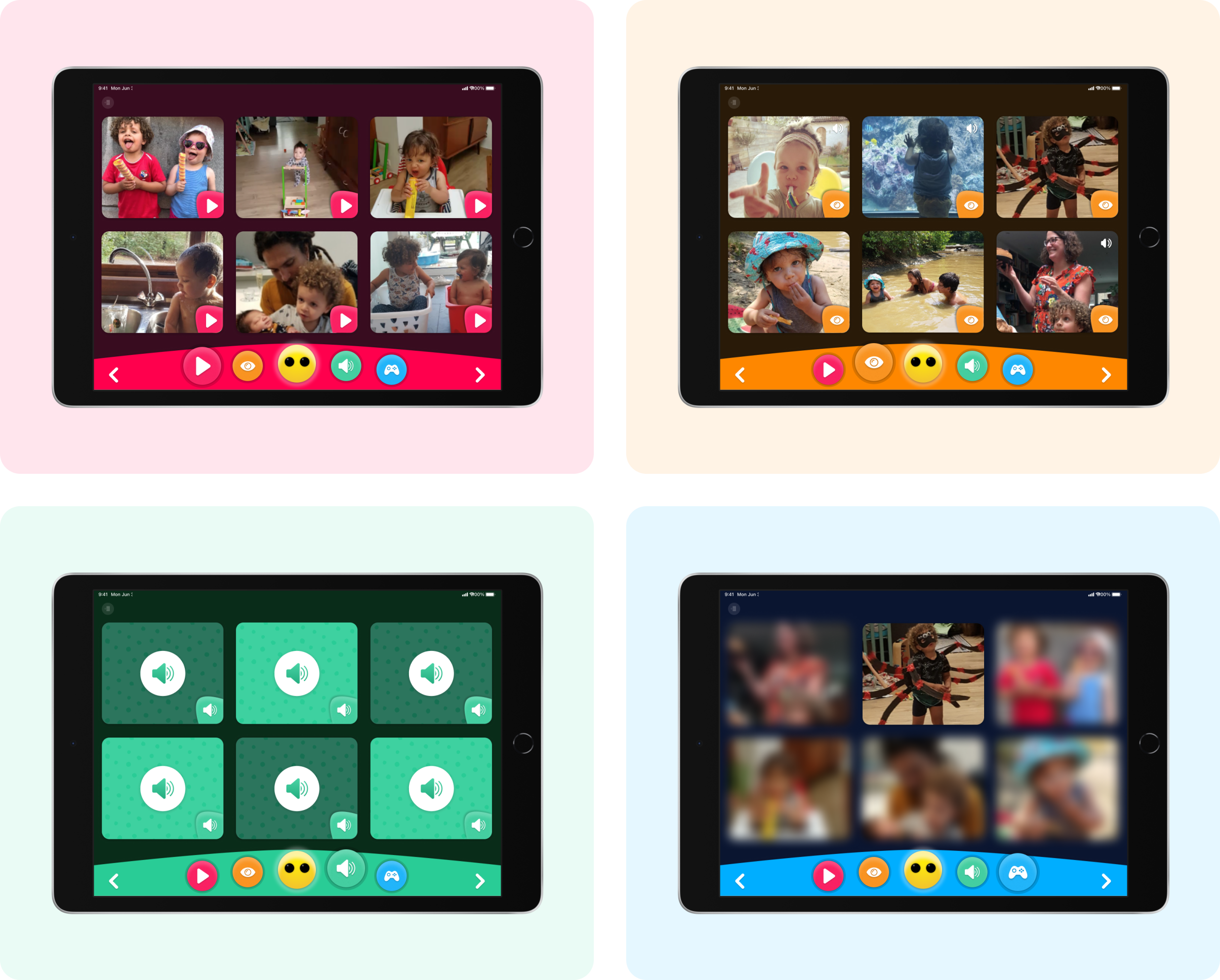
mIKs-it Admin
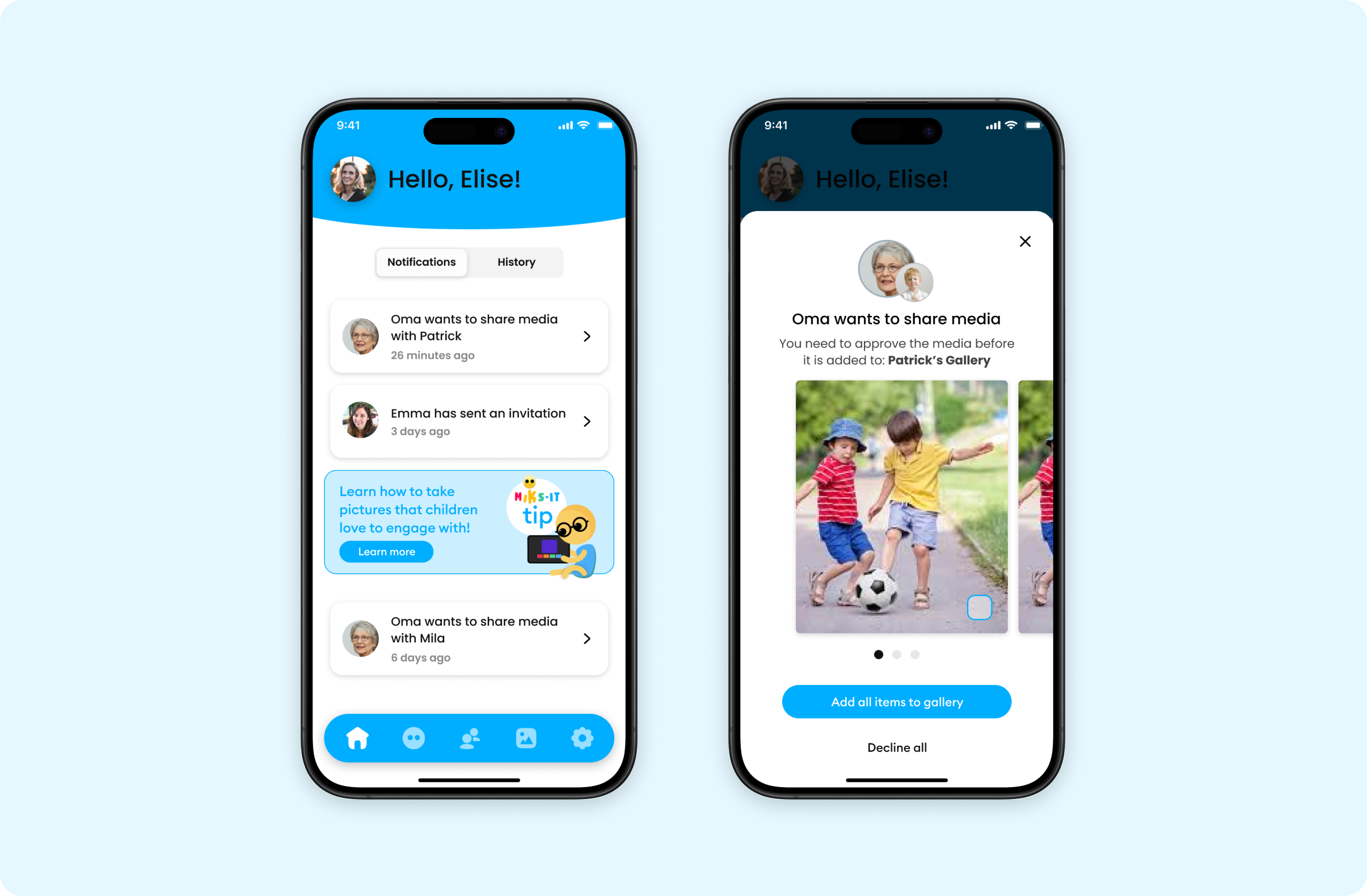
The parent application enables comprehensive content and user management:
- Gallery Management: Upload, organise, and control shared media
- Family Management: Create and manage child profiles
- Contact Management: Control who can share content with children
- Permission System: Granular controls for content visibility and sharing
- Notification Centre: Updates on new content and approval requests
The admin interface maintains visual connections to the children's app while adopting a more structured, information-rich approach appropriate for adult users.
Security and Privacy Architecture
A significant innovation in mIKs-it is its robust security architecture:
- End-to-End Encryption: All personal data is encrypted before transmission
- Identity Verification: Options for validating user identities to ensure child safety
- Consent Engine: Sophisticated permission management for shared content
- Authorisation System: Role-based access controls for different user types
This approach creates a "walled garden" for children's content that respects privacy while enabling controlled sharing with trusted contacts like family members, teachers, or therapists.
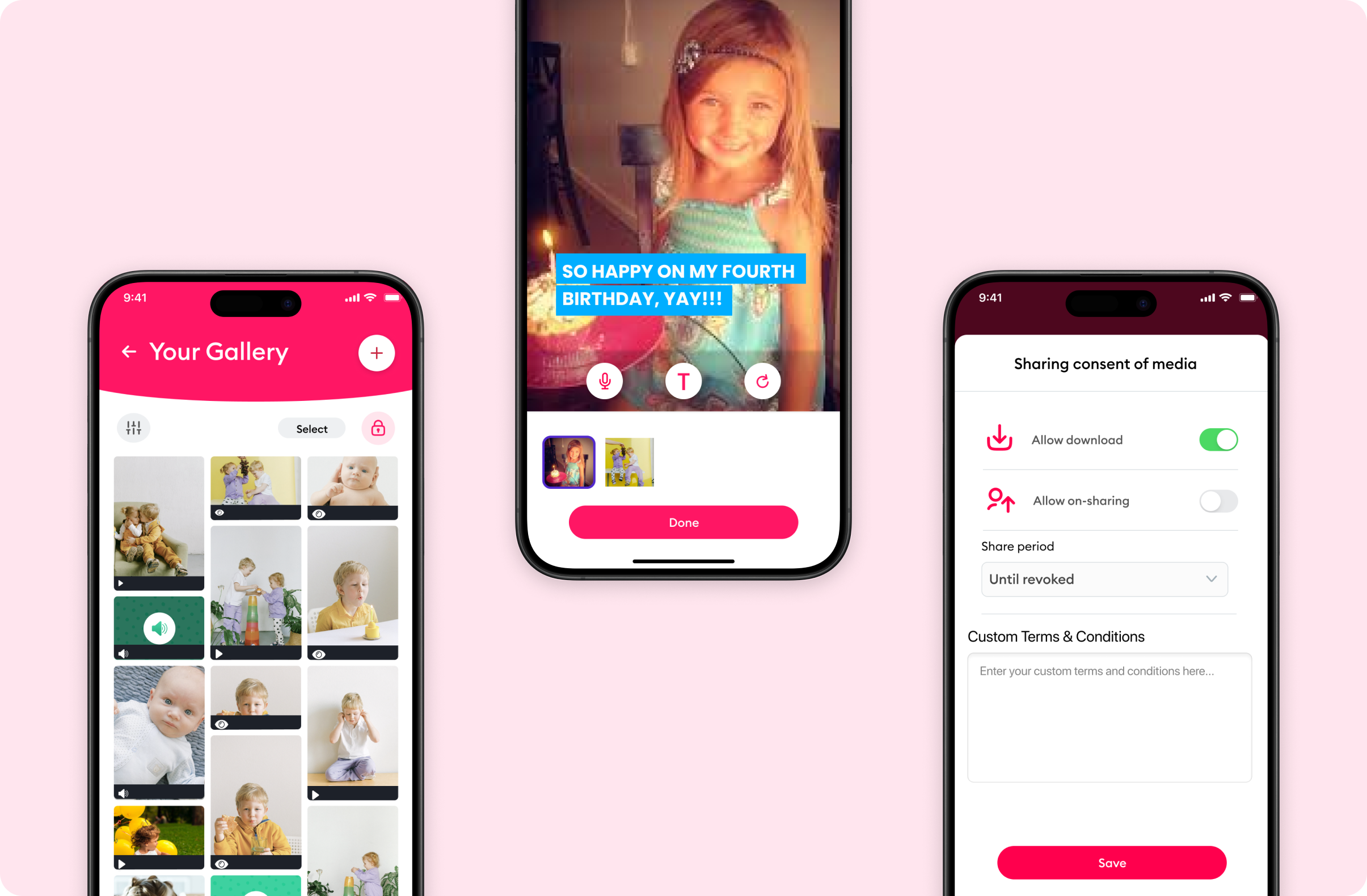
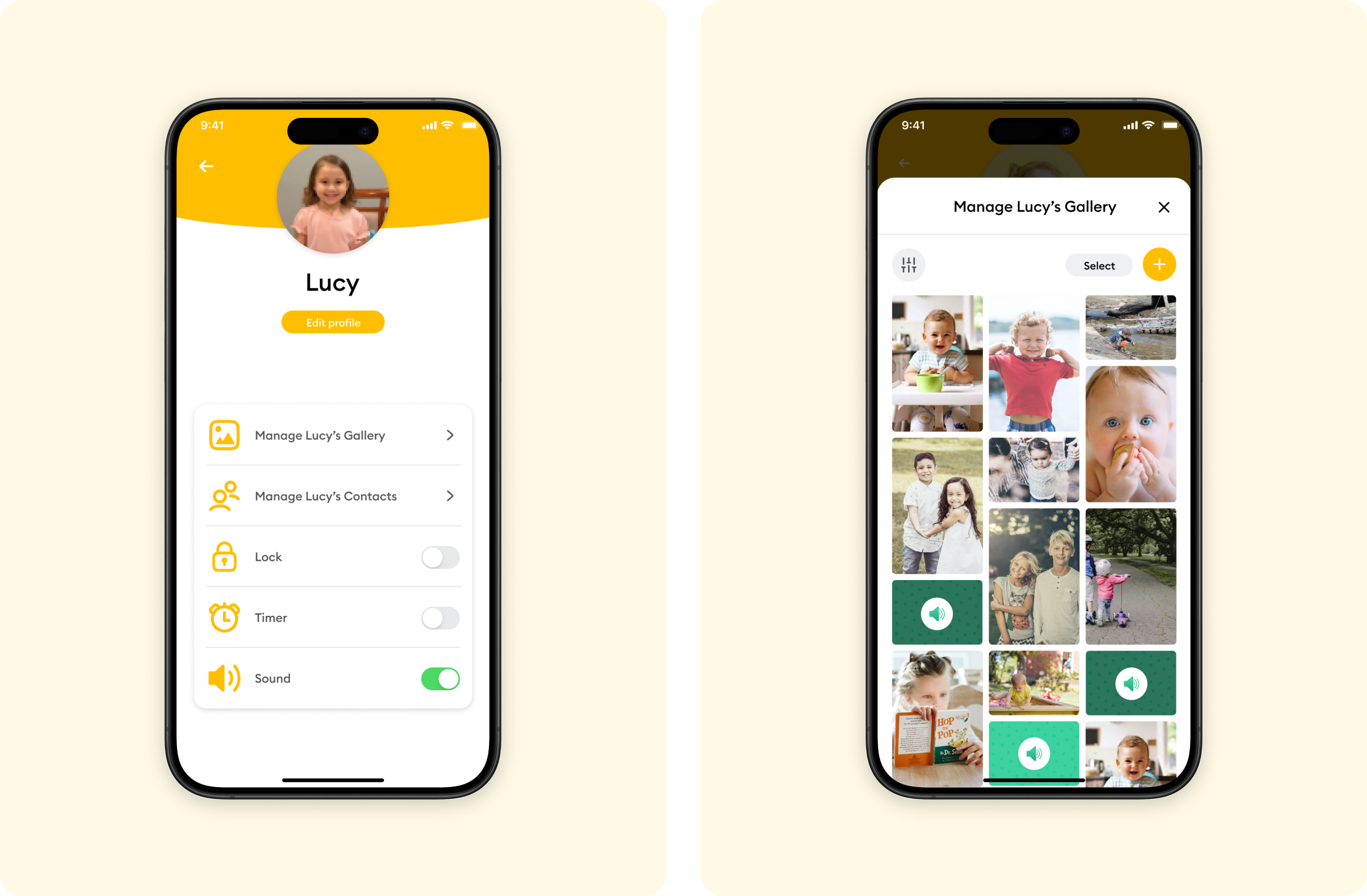
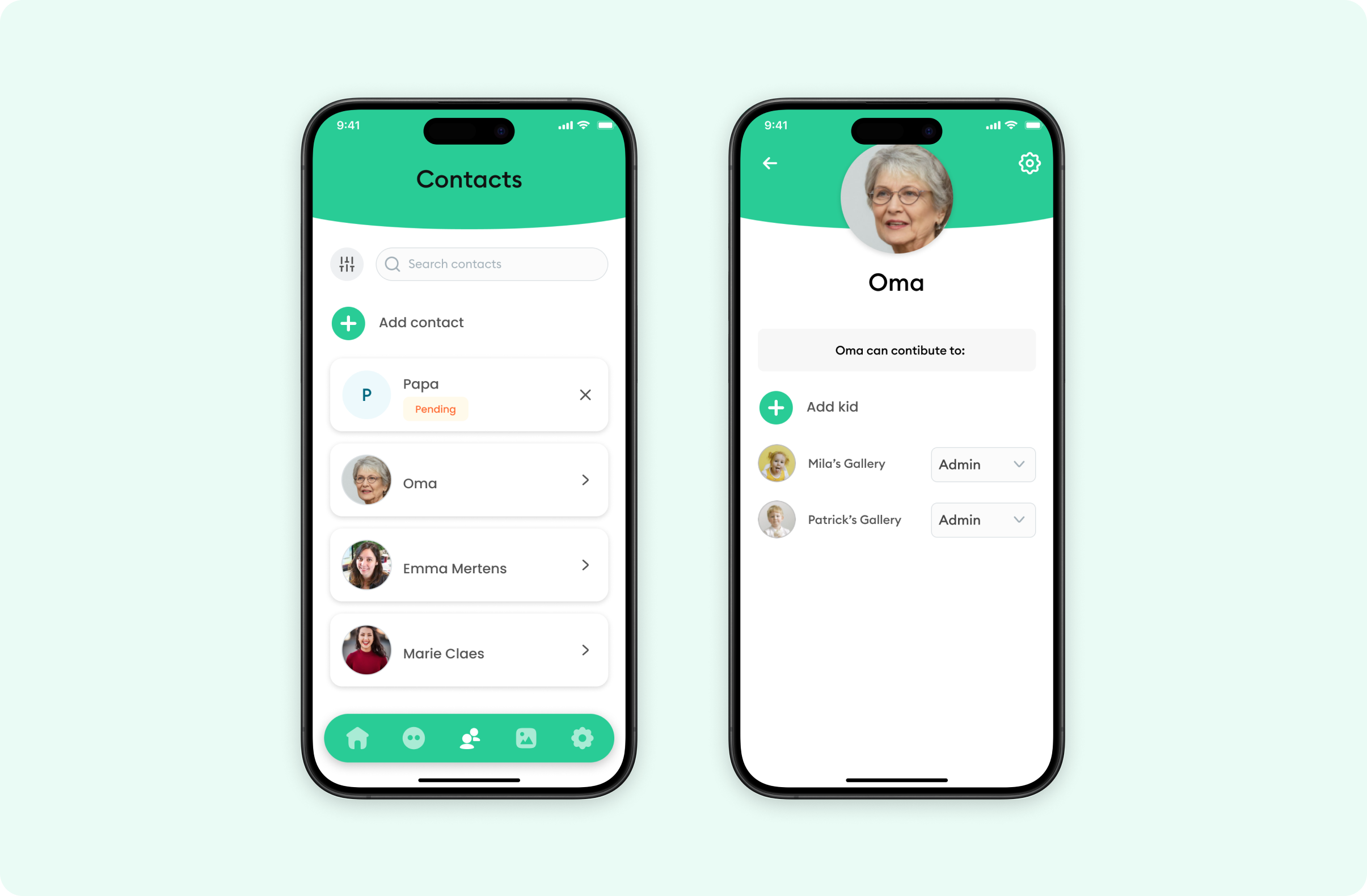
Outcomes
The mIKs-it prototype was distributed to five families for testing, with positive results:
Parents reported that children of all abilities quickly learned to navigate the application independently. Children with special needs showed particular engagement with content featuring themselves and family members, often using the app to initiate communication about what they were seeing.
Key observations from the research included:
- Children remained highly focused when using the application, even with background distractions
- The application facilitated memory recall and storytelling for children with communication challenges
- Siblings often used the app together, creating new opportunities for interaction
- Parents appreciated the safety and privacy features compared to commercial platforms
- Families saw potential for supporting developmental goals beyond simple entertainment
All test families expressed interest in continuing to use mIKs-it beyond the testing period, with parents noting its value for creating meaningful engagement and supporting communication development.
The proof-of-concept demonstrated clear value for both Heder's existing community and potential wider market applications. The project validated not just the technical feasibility but the genuine impact of a purpose-built media platform for children with special needs.